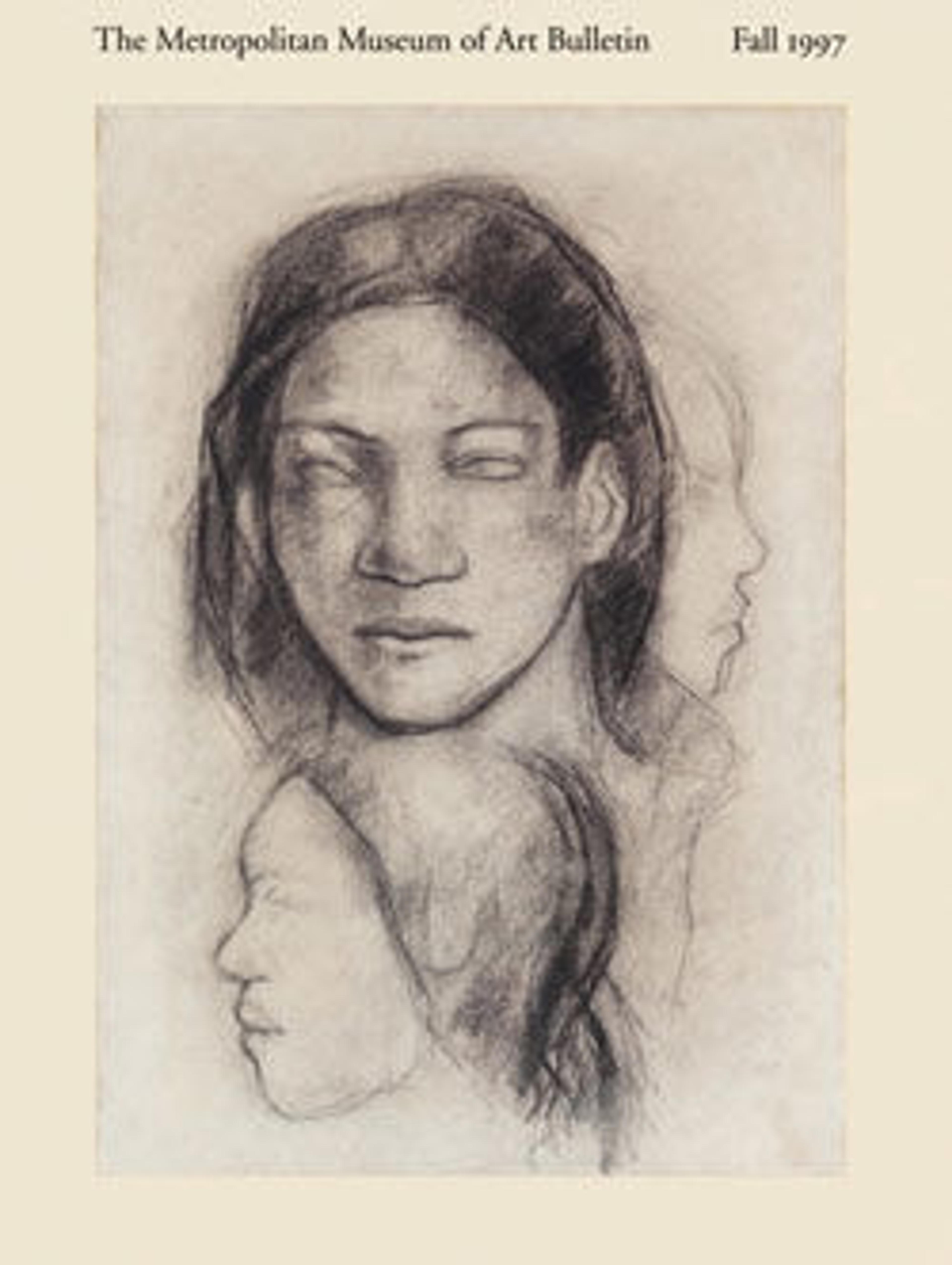Untitled
Photography's role in the avant-garde expanded dramatically in the 1970s, with artists using the camera to document a wide array of performance-based work, in which the body was both subject and medium. This radical new art had an added force in the hands of women artists who, in reclaiming their bodies and, by extension, their identities as subject matter, revealed the essential link between the personal and the political. As a young student at the Rhode Island School of Design, Woodman also used herself as subject, merged with architectural elements in claustrophobic interiors or transfigured into natural forms such as trees. In these less explicitly political, more lyrical images, the artist, who took her own life at the age of twenty-three, charts almost diaristically the states of her soul and her quest for identity.
This late work is a unique, nearly lifesize print on architect's paper and was intended as a study for Woodman's "Temple Project," an unfinished installation planned for the Alternative Museum, New York City. Here, the artist poses as a monumental headless caryatid; other studies show this motif repeated as a frieze. Resurrected from stone like Sylvia Plath's "Lady Lazarus," the colossal figure oscillates between the flesh and its sculpted surrogate. Woodman's fierce repossession of the female form from the arena of male ingenuity and desire is one of the most potent statements of her abbreviated career.
This late work is a unique, nearly lifesize print on architect's paper and was intended as a study for Woodman's "Temple Project," an unfinished installation planned for the Alternative Museum, New York City. Here, the artist poses as a monumental headless caryatid; other studies show this motif repeated as a frieze. Resurrected from stone like Sylvia Plath's "Lady Lazarus," the colossal figure oscillates between the flesh and its sculpted surrogate. Woodman's fierce repossession of the female form from the arena of male ingenuity and desire is one of the most potent statements of her abbreviated career.
Artwork Details
- Title: Untitled
- Artist: Francesca Woodman (American, Denver, Colorado 1958–1981 New York)
- Date: ca. 1980
- Medium: Diazotype
- Dimensions: Image: 187 x 93.4 cm (73 5/8 x 36 3/4 in.)
Frame: 223.5 x 130.8 cm (88 x 51 1/2 in.) - Classification: Photographs
- Credit Line: Purchase, The Herbert and Nannette Rothschild Fund Gift, in memory of Judith Rothschild, 1996
- Object Number: 1996.322
- Rights and Reproduction: © Woodman Family Foundation / Artists Rights Society (ARS), New York
- Curatorial Department: Photographs
More Artwork
Research Resources
The Met provides unparalleled resources for research and welcomes an international community of students and scholars. The Met's Open Access API is where creators and researchers can connect to the The Met collection. Open Access data and public domain images are available for unrestricted commercial and noncommercial use without permission or fee.
To request images under copyright and other restrictions, please use this Image Request form.
Feedback
We continue to research and examine historical and cultural context for objects in The Met collection. If you have comments or questions about this object record, please contact us using the form below. The Museum looks forward to receiving your comments.
